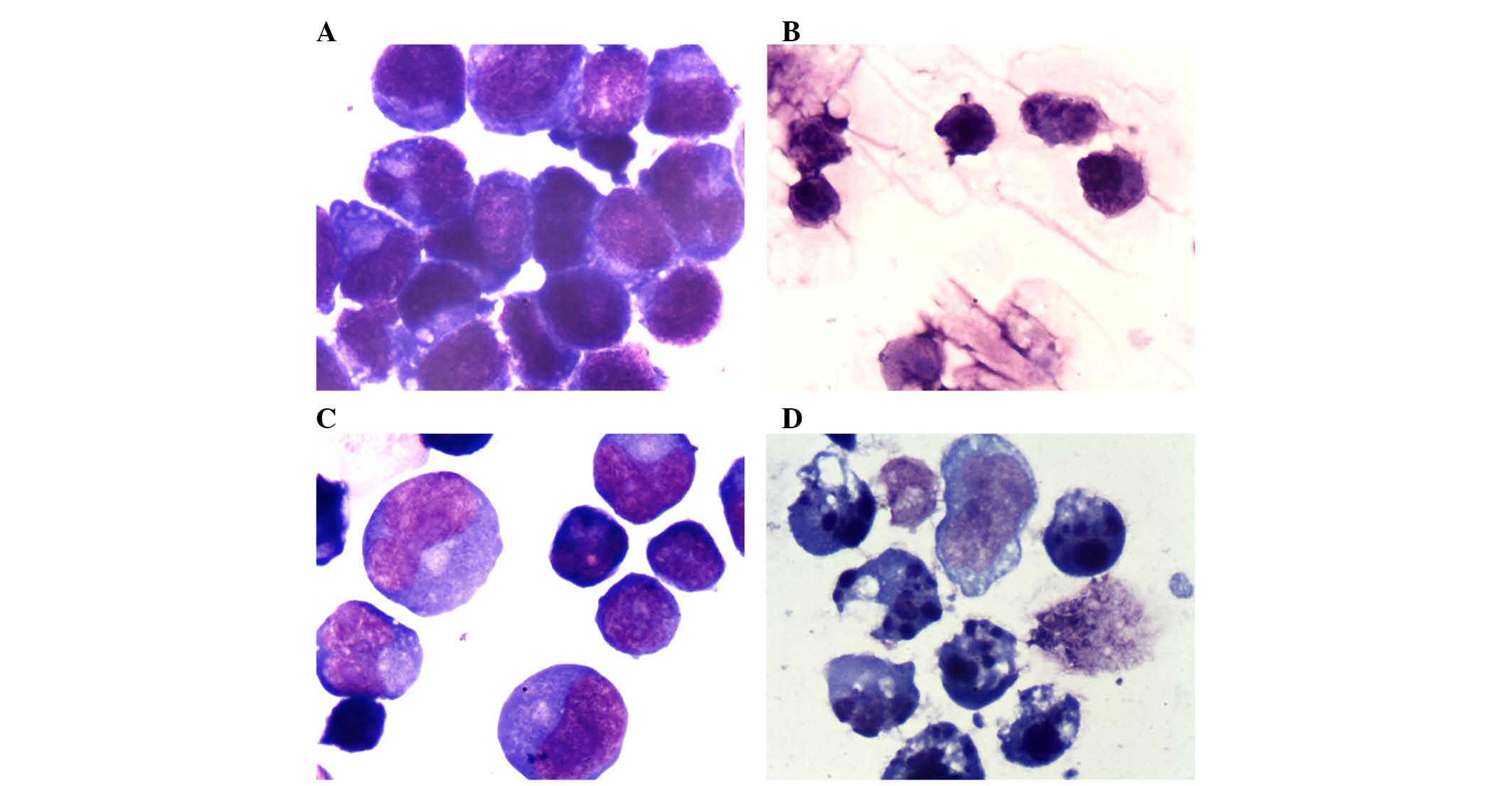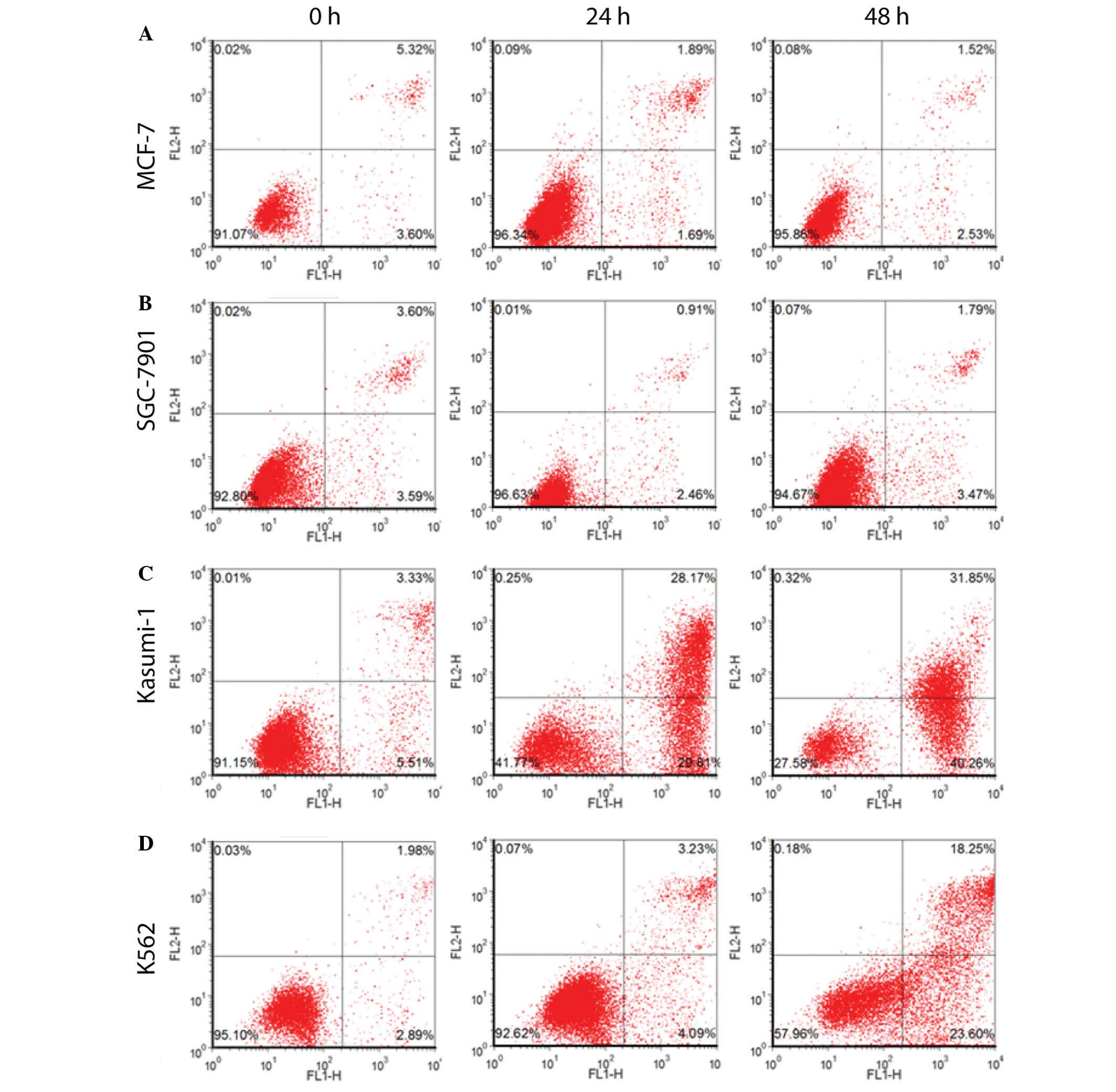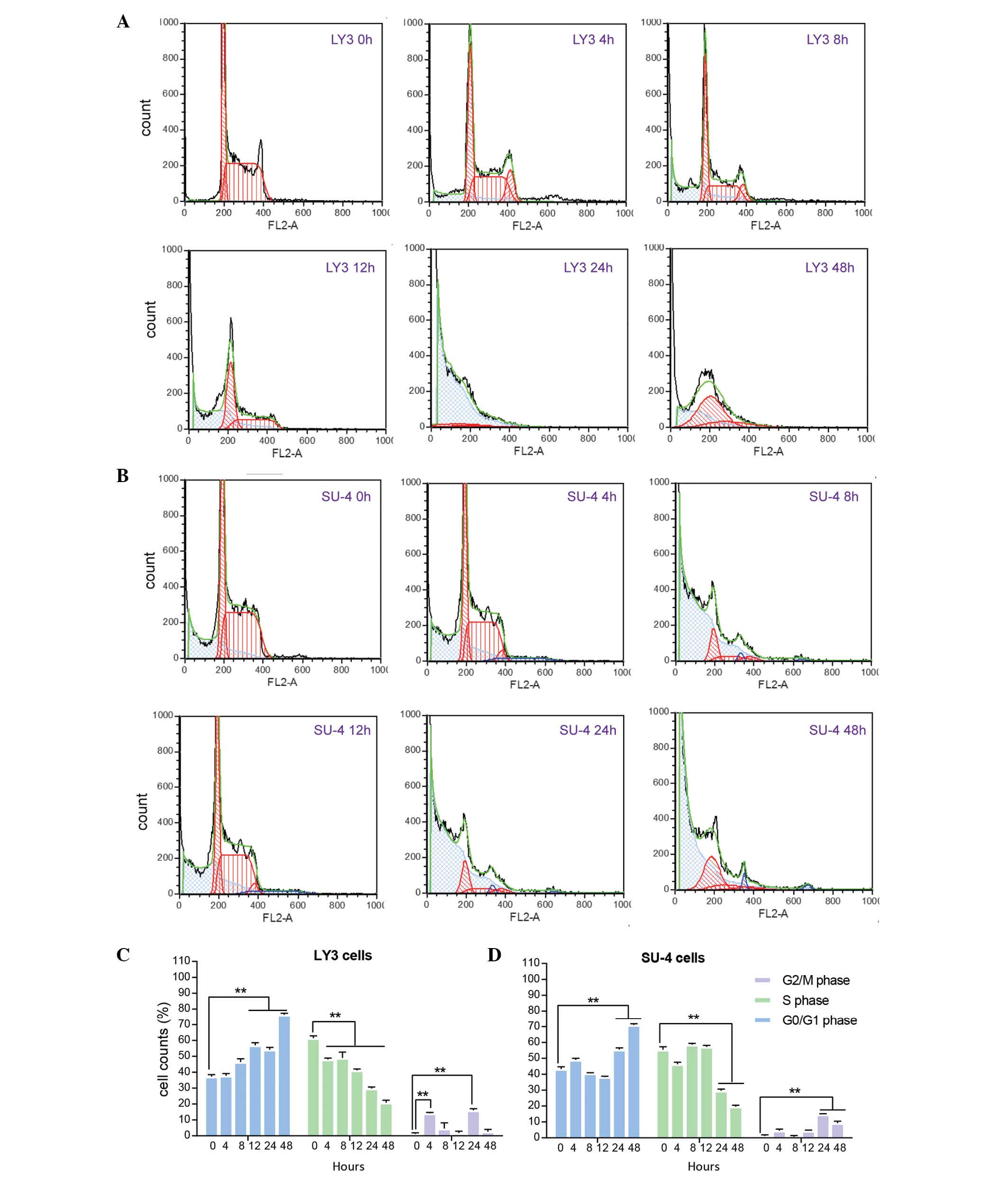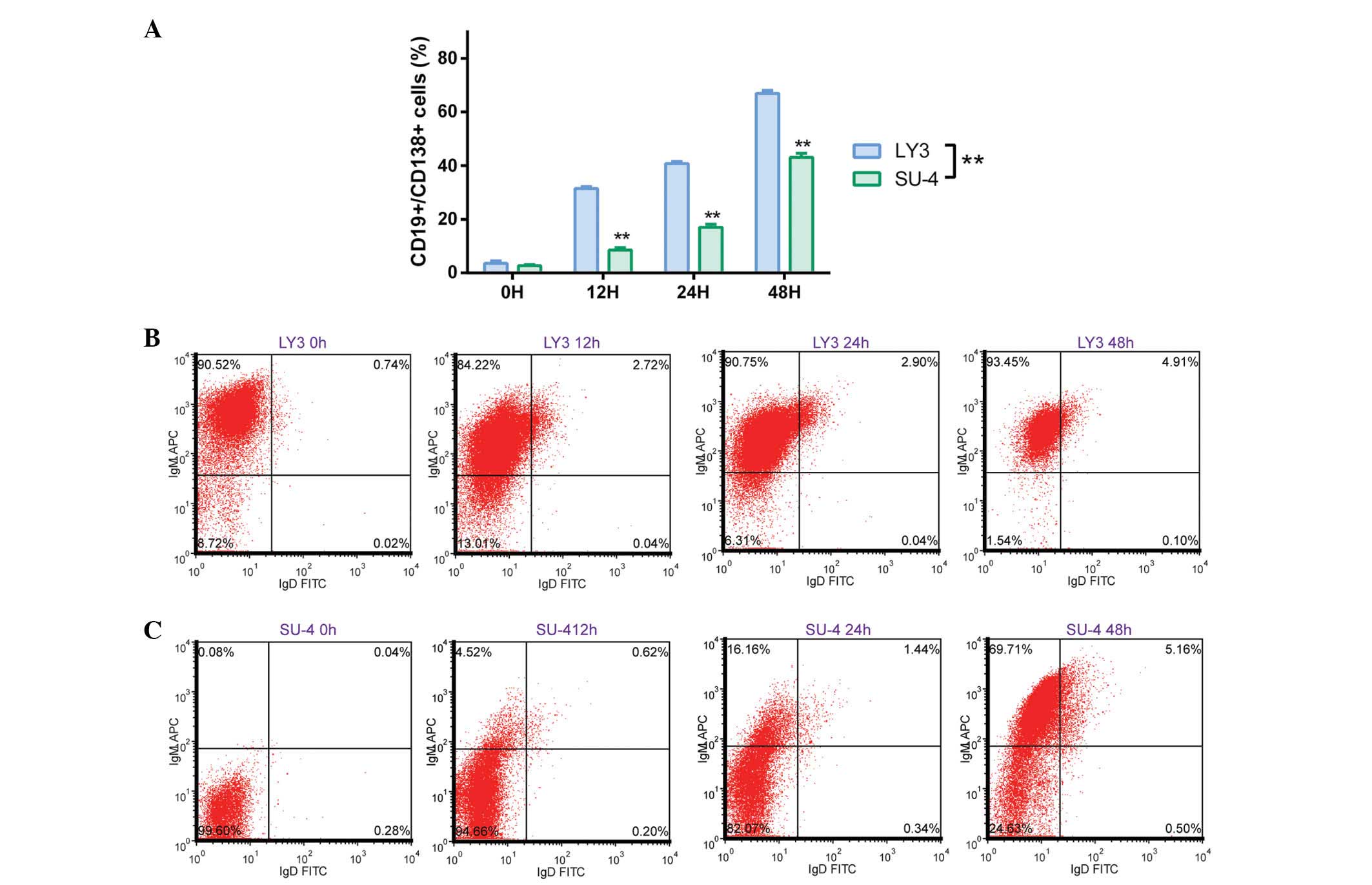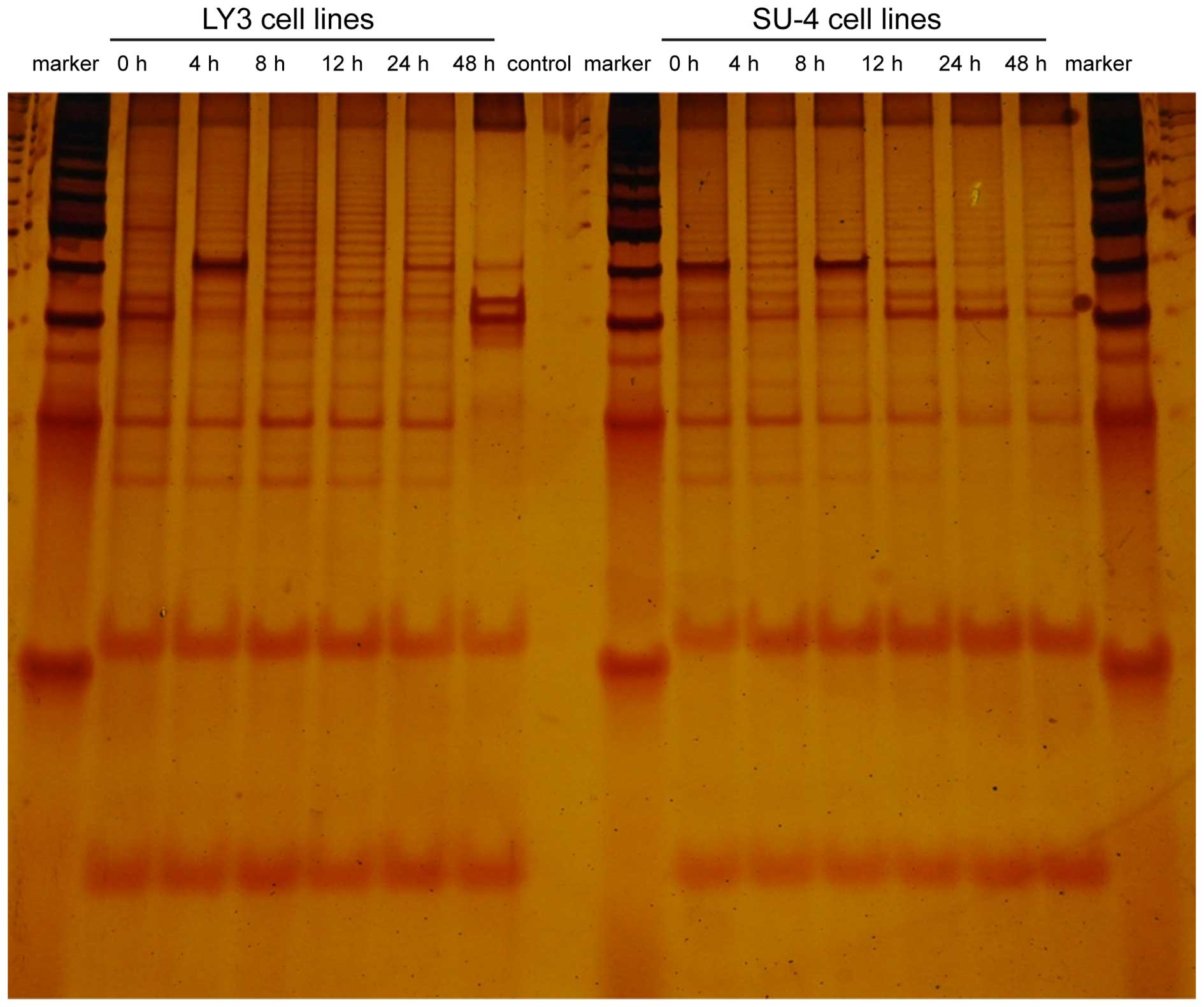|
1
|
Cultrera JL and Dalia SM: Diffuse large
B-cell lymphoma: Current strategies and future directions. Cancer
Control. 19:204–213. 2012.PubMed/NCBI
|
|
2
|
Rosenwald A, Wright G, Chan WC, Connors
JM, Campo E, Fisher RI, Gascoyne RD, Muller-Hermelink HK, Smeland
EB, Giltnane JM, et al Lymphoma/Leukemia Molecular Profiling
Project: The use of molecular profiling to predict survival after
chemotherapy for diffuse large-B-cell lymphoma. N Engl J Med.
346:1937–1947. 2002. View Article : Google Scholar : PubMed/NCBI
|
|
3
|
Grillo-López AJ, White CA, Dallaire BK,
Varns CL, Shen CD, Wei A, Leonard JE, McClure A, Weaver R, Cairelli
S and Rosenberg J: Rituximab: The first monoclonal antibody
approved for the treatment of lymphoma. Curr Pharm Biotechnol.
1:1–9. 2000. View Article : Google Scholar
|
|
4
|
Pfreundschuh M, Trümper L, Osterborg A,
Pettengell R, Trneny M, Imrie K, Ma D, Gill D, Walewski J, Zinzani
PL, et al MabThera International Trial Group: CHOP-like
chemotherapy plus rituximab versus CHOP-like chemotherapy alone in
young patients with good-prognosis diffuse large-B-cell lymphoma: A
randomised controlled trial by the MabThera International Trial
(MInT) Group. Lancet Oncol. 7:379–391. 2006. View Article : Google Scholar : PubMed/NCBI
|
|
5
|
Martelli M, Ferreri AJ, Agostinelli C, Di
Rocco A, Pfreundschuh M and Pileri SA: Diffuse large B-cell
lymphoma. Crit Rev Oncol Hematol. 87:146–171. 2013. View Article : Google Scholar : PubMed/NCBI
|
|
6
|
Colomo L, López-Guillermo A, Perales M,
Rives S, Martínez A, Bosch F, Colomer D, Falini B, Montserrat E and
Campo E: Clinical impact of the differentiation profile assessed by
immunophenotyping in patients with diffuse large B-cell lymphoma.
Blood. 101:78–84. 2003. View Article : Google Scholar
|
|
7
|
Meyer PN, Fu K, Greiner TC, Smith LM,
Delabie J, Gascoyne RD, Ott G, Rosenwald A, Braziel RM, Campo E, et
al: Immunohistochemical methods for predicting cell of origin and
survival in patients with diffuse large B-cell lymphoma treated
with rituximab. J Clin Oncol. 29:200–207. 2011. View Article : Google Scholar :
|
|
8
|
Saad AA, Awed NM, Abdel-Hafeez ZM, Kamal
GM, Elsallaly HM and Alloub AI: Prognostic value of
immunohistochemical classification of diffuse large B-cell lymphoma
into germinal center B-cell and non-germinal center B-cell
subtypes. Saudi Med J. 31:135–141. 2010.PubMed/NCBI
|
|
9
|
Li M, Liu CL, Yin WJ, He YX, Xue XM, Duan
ZJ and Gao ZF: The clinical significance of a new classification
algorithm in Chinese DLBCL cases. Zhonghua Xue Ye Xue Za Zhi.
33:801–804. 2012.In Chinese.
|
|
10
|
Zhou XJ, Zhou YH, Chen XH and Qian WB:
Homoharringtonine combined arsenic trioxide induced apoptosis in
human multiple myeloma cell line RPMI 8226: An experimental
research. Zhongguo Zhong Xi Yi Jie He Za Zhi. 33:834–839. 2013.In
Chinese. PubMed/NCBI
|
|
11
|
Daver N, Vega-Ruiz A, Kantarjian HM,
Estrov Z, Ferrajoli A, Kornblau S, Verstovsek S, Garcia-Manero G
and Cortes JE: A phase II open-label study of the intravenous
administration of homoharringtonine in the treatment of
myelodysplastic syndrome. Eur J Cancer Care (Engl). 22:605–611.
2013. View Article : Google Scholar
|
|
12
|
Cao H, Cheng Y, You L, Qian J and Qian W:
Homohar-ringtonine and SAHA synergistically enhance apoptosis in
human acute myeloid leukemia cells through upregulation of TRAIL
and death receptors. Mol Med Rep. 7:1838–1844. 2013.PubMed/NCBI
|
|
13
|
Chen R, Guo L, Chen Y, Jiang Y, Wierda WG
and Plunkett W: Homoharringtonine reduced Mcl-1 expression and
induced apoptosis in chronic lymphocytic leukemia. Blood.
117:156–164. 2011. View Article : Google Scholar :
|
|
14
|
Cai Z, Lin M, Ludwig WD and Karawajew L:
Involvement of mitochondrial membrane potential in the
homoharringtonine induced apoptosis of leukemic T-cells. Zhonghua
Xue Ye Xue Za Zhi. 22:238–240. 2001.In Chinese.
|
|
15
|
Wang L and Jin J: Study on inhibition of
telomerase activity of human T lymphocyte Jurkat cells by
homoharringtonine and its mechanism. Shiyong Zhongliu Zazhi.
20:391–394. 2005.In Chinese.
|
|
16
|
Li YF, Liu X, Liu DS, Din BH and Zhu JB:
The effect of homoharringtonine in patients with chronic myeloid
leukemia who have failed or responded suboptimally to imatinib
therapy. Leuk Lymphoma. 50:1889–1891. 2009. View Article : Google Scholar : PubMed/NCBI
|
|
17
|
Xie WZ, Lin MF, Huang H and Cai Z:
Homoharringtonine-induced apoptosis of human leukemia HL-60 cells
is associated with downregulation of telomerase. Am J Chin Med.
34:233–244. 2006. View Article : Google Scholar
|
|
18
|
Huang HJ, He XZ and Jiao F: Induction of
apoptosis on SGC-7901 cells by harringtonine. Dongnan Daxue Xuebao
(Yixueban). 32:206–209. 2013.In Chinese.
|
|
19
|
Liu X and Ji YB: Study on anticancer
effects of homoharringtonine to HepG2 by MTT in vitro. J Harbin
Univ Commer (Nat Sci Ed. 28:393–395. 2012.
|
|
20
|
Jin Y, Lu Z, Cao K, Zhu Y, Chen Q, Zhu F,
Qian C and Pan J: The antitumor activity of homoharringtonine
against human mast cells harboring the KIT D816V mutation. Mol
Cancer Ther. 9:211–223. 2010. View Article : Google Scholar : PubMed/NCBI
|
|
21
|
Beranova L, Pombinho AR, Spegarova J, Koc
M, Klanova M, Molinsky J, Klener P, Bartunek P and Andera L: The
plant alkaloid and anti-leukemia drug homoharringtonine sensitizes
resistant human colorectal carcinoma cells to TRAIL-induced
apoptosis via multiple mechanisms. Apoptosis. 18:739–750. 2013.
View Article : Google Scholar : PubMed/NCBI
|
|
22
|
Belletti B, Nicoloso MS, Schiappacassi M,
Chimienti E, Berton S, Lovat F, Colombatti A and Baldassarre G: p27
(kip1) functional regulation in human cancer: A potential target
for therapeutic designs. Curr Med Chem. 12:1589–1605. 2005.
View Article : Google Scholar
|
|
23
|
Liu JN, Bi GF, Wen PE, Yang WH, Ren X,
Tang TH, Xie C, Dong W, Jiang GS and Lin RX: Study on variation of
CD44 expression and its role in differentiation of HL-60 cells
induced by HHT. Chinese Journal of Cancer Prevention and Treatment.
15:1361–1364. 2008.
|
|
24
|
Mengual Gómez DL, Armando RG, Farina HG
and Gómez DE: Telomerase and telomere: Their structure and dynamics
in health and disease. Medicina (B Aires). 74:69–76. 2014.In
Spanish.
|
|
25
|
Autexier C and Lue NF: The structure and
function of telomerase reverse transcriptase. Annu Rev Biochem.
75:493–517. 2006. View Article : Google Scholar : PubMed/NCBI
|
|
26
|
Yu YF, Zhang Y, Shen N, Zhang RY and Lu
XQ: Effect of VEGF, P53 and telomerase on angiogenesis of gastric
carcinoma tissue. Asian Pac J Trop Med. 7:293–296. 2014. View Article : Google Scholar : PubMed/NCBI
|
|
27
|
Xu D, Wang Q, Gruber A, Björkholm M, Chen
Z, Zaid A, Selivanova G, Peterson C, Wiman KG and Pisa P:
Downregulation of telomerase reverse transcriptase mRNA expression
by wild type p53 in human tumor cells. Oncogene. 19:5123–5133.
2000. View Article : Google Scholar : PubMed/NCBI
|
|
28
|
Sakurai S, Fukayama M, Kaizaki Y, Saito K,
Kanazawa K, Kitamura M, Iwasaki Y, Hishima T, Hayashi Y and Koike
M: Telomerase activity in gastrointestinal stromal tumors. Cancer.
83:2060–2066. 1998. View Article : Google Scholar : PubMed/NCBI
|
|
29
|
Akiyama M, Yamada O, Kanda N, Akita S,
Kawano T, Ohno T, Mizoguchi H, Eto Y, Anderson KC and Yamada H:
Telomerase overexpression in K562 leukemia cells protects against
apoptosis by serum deprivation and double-stranded DNA break
inducing agents, but not against DNA synthesis inhibitors. Cancer
Lett. 178:187–197. 2002. View Article : Google Scholar : PubMed/NCBI
|
|
30
|
Guo M and Wang J: Advances in study on
telomerase of esophageal carcinoma. Chinese Journal of
Gastroenterology. 18:122–124. 2013.
|
|
31
|
Lin G, Chen Q, Yu S, Lin S, Yao H, Ding Z,
Chen S, Lin MC and Wang X: Overexpression of human telomerase
reverse transcriptase C-terminal polypeptide sensitizes HeLa cells
to 5-fluorouracilinduced growth inhibition and apoptosis. Mol Med
Rep. 9:279–284. 2014.
|
|
32
|
Park ES, Lee J, Kang SY, Lee EJ, Lee MH,
Yoon N, Oh YL and Kim KM: A comparative study of telomerase
activity and cytologic diagnosis in malignant ascites. Anal Quant
Cytopathol Histpathol. 35:146–151. 2013.PubMed/NCBI
|
|
33
|
Li HJ, Wang JM, Tian YT, Bai ML, Zhang LX
and Zhao XX: Effect of matrine on Fas, VEGF, and activities of
telomerase of MCF-7 cells. Zhongguo Zhong Xi Yi Jie He Za Zhi.
33:1247–1251. 2013.In Chinese. PubMed/NCBI
|
|
34
|
Lin G, Chen Q, Yu S, Lin S, Yao H, Ding Z,
Chen S, Lin MC and Wang X: Overexpression of human telomerase
reverse transcriptase C-terminal polypeptide sensitizes HeLa cells
to 5-fluorouracilinduced growth inhibition and apoptosis. Mol Med
Rep. 9:279–284. 2014.
|
|
35
|
Tomizawa A, Kanno SI, Osanai Y, Yomogida S
and Ishikawa M: Cytotoxic effects of caffeic acid undecyl ester are
involved in the inhibition of telomerase activity in NALM-6 human
B-cell leukemia cells. Oncol Lett. 6:875–877. 2013.PubMed/NCBI
|
|
36
|
Halacli SO, Canpinar H, Cimen E and
Sunguroglu A: Effects of gamma irradiation on cell cycle, apoptosis
and telomerase activity in p53 wild-type and deficient HCT116 colon
cancer cell lines. Oncol Lett. 6:807–810. 2013.PubMed/NCBI
|
|
37
|
Nakashima M, Nandakumar J, Sullivan KD,
Espinosa JM and Cech TR: Inhibition of telomerase recruitment and
cancer cell death. J Biol Chem. 288:33171–33180. 2013. View Article : Google Scholar : PubMed/NCBI
|
|
38
|
Norrback KF, Enblad G, Erlanson M,
Sundström C and Roos G: Telomerase activity in Hodgkin's disease.
Blood. 92:567–573. 1998.PubMed/NCBI
|
|
39
|
Armitage JO and Weisenburger DD: New
approach to classifying non-Hodgkin's lymphomas: Clinical features
of the major histologic subtypes. Non-Hodgkin's lymphoma
classification project. J Clin Oncol. 16:2780–2795. 1998.PubMed/NCBI
|
















